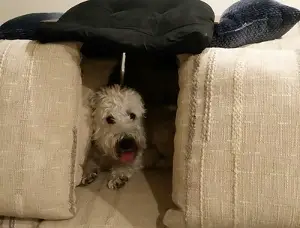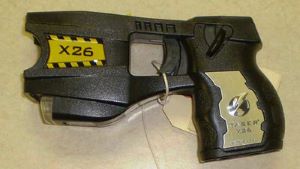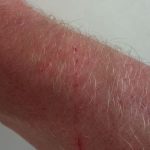
Dogs shake or tremble for a multitude of reasons. If your dog was just bitten by another dog, and now they’re shaking, it can be either for physical or psychological reasons. Either way, it should always be taken seriously and you need to examine their injuries.
Dog owners certainly know that a dog bite can bring various health complications, from fractures to rabies infection. When it comes to dog bites, the scary thing is that the wound may look mild from the outside but wreaks havoc inside. Read on to get a comprehensive overview of dog bites and dog shaking.
Why might a dog shake after being bitten?
- Pain
The pain from the wound can also cause them to shake, shiver, or have muscle tremors.
- Shock
Shock here doesn’t just mean emotionally. Shock is a condition where the dog’s body has inadequate blood flow, and it often happens after a dog sustains an injury.
- Fear and anxiety
Just like humans, some dogs tremble when they’re scared, and this is a natural reaction after an attack.
What other reactions might you see from a dog after being bitten?
If you’re not present when another dog bites your dog, you might not even see the wound because it’s covered by fur. There are several other symptoms your dog might show after being bitten by another dog.
- limp
- lethargy/low energy
- pain/swelling/redness/tenderness in a certain area
- warmth in a concentrated area
If your dog is experiencing one or more of those symptoms, check their skin for wounds (external or internal).
What should I do if my dog was bitten by another dog?
- Break up the fight
The first thing you have to do if you see your dog bitten is of course separate them from the attacker. Instead of getting in between them and risk getting attacked yourself, try distracting them with a loud clap or other types of diversion. If there are two or more people, you can also try pulling the dogs away from each other.
- Ask the owner about the attacker dog’s immunization updates
If the owner is present, ask them about the attacker’s rabies immunization status. Animal control centers and animal hospitals can also help you gather this information.
- Check vital signs
Depending on the health of the attacker and how deep the bite was, the effects can range from nothing at all to death. Therefore, it is necessary to check their vitals.
- Pulse rate: Put two fingers on their pulsing femoral artery on the inside of their rear leg at mid-thigh. Count how many times it pulses in the span of 15 seconds and multiply the number by four to get the beats per minute (bpm). Normal pulse rate for puppies and small dogs are 120 to 160 bpm, while normal pulse rate for dogs over 30 pounds are 60 to 120 bpm.
- Respiratory rate: Count how many breaths they take in one minute. Normal respiratory rate for dogs is 10 to 30 breaths per minute.
- Body temperature: Take your dog’s temperature rectally with a thermometer. The normal temperature for dogs is 38.3 to 39.2˚C. If it’s above 40˚C, take your dog to the vet.
- Gum colour: Their gum should be pink. If it’s pale, bright red, bluish white or yellow, consult the vet immediately.
- Check thoroughly for wounds and infection
You might miss wounds in areas that are densely covered in fur. Examine your pup’s whole body and try to locate any kind of anomaly. Even if there is no open wound, the bitten area can still get an infection. Some of the common symptoms of infection are redness, swelling, warmth, pain, or tenderness in the affected area.
- Clean the wound
To prevent contamination, try cleaning around the wound with warm water and soap. You can also remove objects like dirt or hair from the wound.
If the skin isn’t broken, you can just run warm water over the wound. It’s best to use warm water because it’s good for maintaining blood flow, thus treating the wounded tissue. If your dog shakes in pain when you do this, the bite probably caused internal damage.
- Apply pressure to the wound
Just like in humans, if the dog is left with a gaping wound, apply pressure to the wound in order to control the bleeding. Most bite wounds don’t bleed that much and in that case you just need to apply steady constant pressure with a clean cloth for five minutes until the bleeding stops.
- Go to the vet and massage them on the way
As stated above, you should always take your dog to the vet if they get bitten by another dog. And because anxiety is one of the reasons your dog is shaking, you can massage them gently to try to calm them down on the way. At the animal clinic, tell the vet if you’ve spotted signs of infection.
How can you treat a dog bite?
- Antibiotics
Veterinarians will usually prescribe topical antibiotics, such as povidone iodine.
- Pain meds
If the wound is extensive, your dog will be put under anaesthetic before their wound is cleaned and they’ll be prescribed pain meds.
- Sutures
Lacerations will get sutured. Prevent the suture from getting wet and dirty.
- E-collar
Your dog will need to wear an e-collar to keep them from licking their wound.
- Change bandage frequently
If the vet bandages your dog, change the bandage frequently to keep it clean and dry.
What makes a dog bite bad?
- Certain body parts are more prone to complications
A dog’s legs, torso, neck, and joint area are more prone to irritation. If your dog was bitten in one of those areas, it is best to go to the vet. On the other hand, bites on the mouth or nose heal faster and shouldn’t cause complications.
- If it’s deep
Dogs have strong teeth and jaws, meaning a dog bite can potentially penetrate through skin and endanger the bones and blood vessels. A dog bite can damage tissues under the wound, causing internal bleeding.
- If it’s infected
While broken bones and muscle damage are more painful, infections raise concerns because they are harder to spot. The most common infection that can be transmitted through dog bite is rabies. This viral disease affects the nervous system and can cause death. Dog teeth also carry bacteria that can lead to abscess forming under the skin.
It should also be kept in mind that an open wound may be infected because of contamination, causing tetanus. Bacteria can enter the wound from the surrounding skin, hair, or even the environment. This is why you must be careful when cleaning around it and use clean cloth to apply pressure.
How can you treat a dog for shock?
The second possible reason a dog is shaking after being bitten is because they’re in shock. Other than infection, shock is one of the most common causes of death in dogs after physical trauma.
Early signs of shock are rapid heart rate, bright red gums, shallow breathing, and anxiety. If it’s not treated fast the dog might become lethargic, gums turning blue and their body temperature cold. If you see any sign of shock, you must take your dog to the vet immediately.
Before you take them to the vet, here are some things you need to remember to treat your dog when they’re in shock.
- This can’t be stressed enough; clean around the wound and apply pressure if they have an open wound.
- Wrap them in a warm blanket to preserve body heat and restrain them to preserve energy. Don’t give a heat pad or other artificial heat as it might cause their blood vessels to dilate.
- Check their breathing and clear their airway.
- Massage them to promote blood circulation.
- Don’t feed nor give them drinks.
How do you socialize a dog that has been attacked?
The last reason your dog might shake after being bitten is fear or anxiety. If you notice your dog is now getting timid or they still tremble upon seeing a bigger dog, try re-introducing them to other dogs slowly.
- If your dog is extremely timid and anxious around other dogs after getting attacked, you need to start small. Show them dog videos or play barking audio to reintroduce them to dogs, most importantly the friendly ones.
- Take them on a walk with another dog (and their owner) while both are on a leash. If your dog is still scared, put some distance.
- Boost their confidence by taking them to do obstacle courses or teaching them tricks. This is especially effective if you take your dog to a group training class, but just being active is shown to reduce anxiety in dogs.
- If they’re no longer scared by the presence of other dogs, try bringing them to dog parks. Don’t force them to socialize and put some distance if they become timid.
What are the (other) main reasons that dogs shake?
Aside from being bitten, there are a lot of other reasons why your dog might be shaking. Some of the most common causes are excitement, the cold, nausea, pain, and old age. Poisoning and kidney disease can also induce shaking. Contact the vet if your dog doesn’t stop shaking for extended periods of time or if they have other symptoms.





